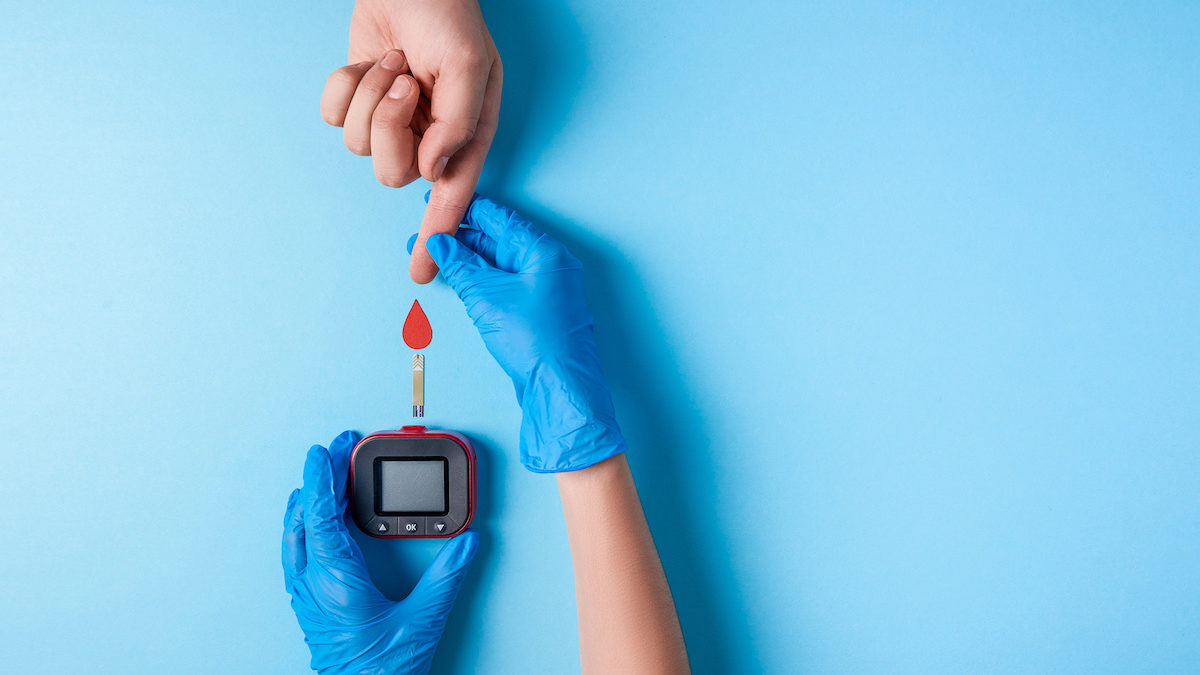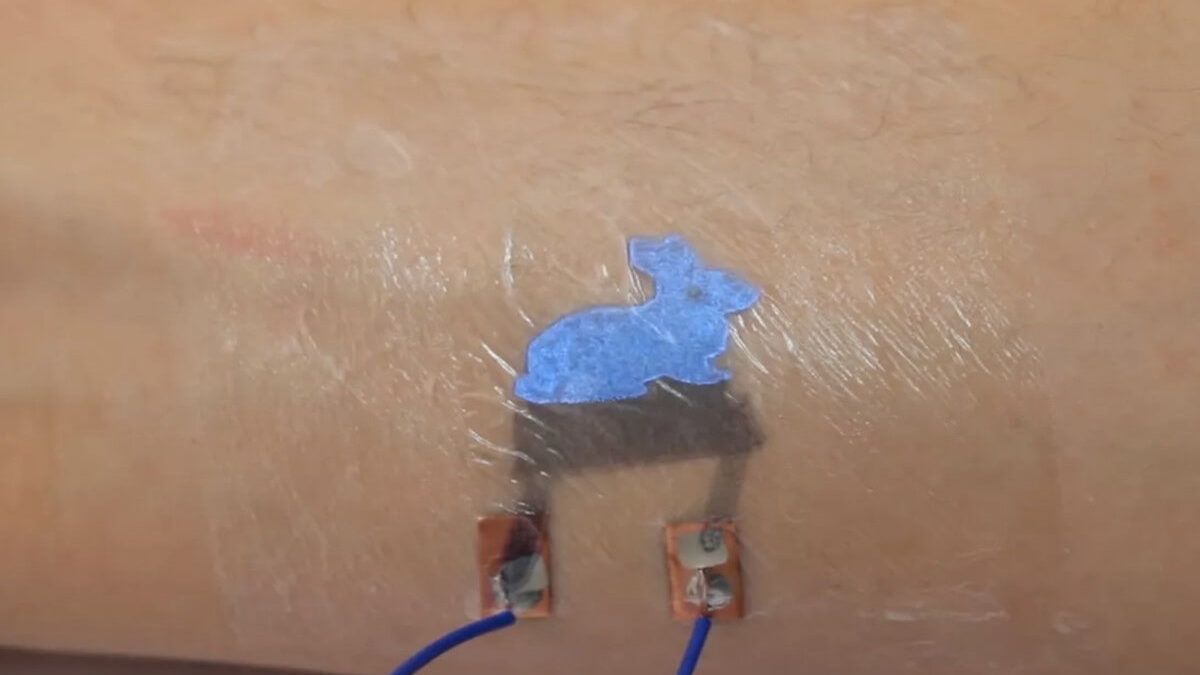Could Smart Tattoos Be the Fitbit of the Future?

Not many things feel like the future anymore. We had those ‘hoverboards’ that we all thought would have us flying over the bus lane, but really just had us spinning about on the spot for a couple of seconds before chucking us off into a crumpled heap. If we’re ticking off the Back To The Future checklist then we can also count self-lacing trainers, although you’d honestly be better off doing them up yourselves.
Fitbits and smartwatches though, well, they kinda feel like what the future should be. Incredibly useful, they’re able to keep us up-to-date on a number of our health vitals and motivated to stay fit (or at least cram in our 10,000 steps). In 2019, there were nearly 30 million active Fitbit users, a number that will surely have gone up in this year of health scares and worrisome pandemics.
But what’s the future of this future? Well, that’s where the smart tattoo enters the conversation.

So, What Exactly Is A Smart Tattoo?
The idea is simple: what if you can have something permanently etched onto your skin that can monitor your health and update you accordingly?
Earlier this year, it was revealed that experimental divisions at Google had quietly been looking into the capabilities of potential wearables that could be tattooed onto your body. Harvard has also conducted research into the topic, as have researchers at Imperial College London, led by Dr. Ali Yetisen and Ph.D. student Rosalia Moreddu.
Glucose Levels
At Imperial, a special pigment was developed which when tattooed could detect biomarkers like glucose in the blood through our skin. It did this by accessing the interstitial fluid and measuring the metabolites, or small molecules present. “[The interstitial fluid] is the fluid surrounding cells, which is found on the regular dermis, and acts as a surrogate of blood,” explains Moreddu.
As your glucose levels rise the tattoo would slowly turn from yellow to dark green. This is vital information for anyone living with diabetes. A 2018 study of 195 people with diabetes found that a wristband was still the preferred device for self-monitoring glucose levels. However, those with type 1 diabetes were more likely to prefer tattoo glucose sensors than those with type 2. The same was true of people under 30 compared to those over.
Type 2 mainly occurs in the over-40 bracket, so this correlation isn’t a surprise and implies that younger, forward-thinking generations may be more inclined to accept a smart tattoo just as we’ve all come to accept our smartwatches.
While Imperial only tested the ink in small doses, in terms of the actual tattoo art, you could feasibly have anything you like. Big, small, unfortunate remnant from that ‘lads’ trip to Zante. Be warned though, colouring in a whole sleeve might make you look like you’re about to turn into the Incredible Hulk.

Other Biomarkers
Two other biomarkers were also measured by Imperial using the same process: Albumin, and pH. Decreasing levels of the former may indicate kidney or liver failure, while abnormal pH levels within your blood could be a sign of anything from asthma and lung disease to gout, or even a drug overdose. Each has its own colour to detect these levels. Think of it as a mood ring that could save your life and you’d be on the right track.
While they didn’t measure hydration levels for their project, and it hasn’t been tried yet, according to Moreddu, a similar approach to the glucose, albumin, and pH sensors could work. “For hydration, you need to measure the concentrations of ions, but it’s definitely feasible. There are sensing methods that have been developed for ions monitoring. For monitoring calcium and potassium too. So it can be expanded.”
Researchers at the University of Colorado Boulder have even been able to develop a tattoo sensor that only shows up on the skin when exposed to UV light, which could alert people that their sunscreen has worn off (and before the inevitable burn starts to settle in). Another skin sensor also becomes visible at different temperatures, providing people with a sort of built-in thermometer. All we need now is for someone to work out how to tattoo a step counter onto our wrist and we’ll never need to charge our Fitbit’s ever again.
Your Body As A Touchpad
In contrast, Google’s research has mainly revolved around the use of conductive ink which can, as the name suggests, conduct electricity. You might have seen videos on social media of people using conductive ink pens to jazz up their science projects or paint working circuits onto their walls.
By screen printing conductive ink onto tattoo paper which is then thermal-cured so it can be applied to the skin, the researchers on the project (undertaken at Saarland University in Germany, and partly funded through a Google Faculty Research Award) have found they can turn the part of our body that the sensors have been applied to into a human touchpad.

Image: Google
Those sensors can then be triggered by traditional touch or swipe gestures, just like on your smartwatch. But some gestures are more specific to working on the skin’s surface. For example, you could squeeze the area around the tattoo or bend your fingers or limbs to activate the sensors.
Humans naturally have fine motor skills, which makes engaging with technology through a squeeze or a bend, a much more natural and effective way of interacting with our devices. Anything contact-free is also an increasingly attractive proposition in a post-pandemic world of hand sanitiser and latex gloves. Just imagine being able to pay for your shopping with a pinch?
Linking It All Together
Don’t be walking into the tattoo parlour and asking for a Google-approved smart tattoo just yet though. Moreddu is at pains to point out that the technology is still very much at the research and testing stage.
But if researchers in the future were able to combine both the biomarker monitoring capabilities with the human touchpad concept, then we would be quite some way to realising a smart tattoo that could have all the capabilities of a health tracker, plugged right onto our body.
“I envision a future where tattoos enable us — tattoo-able wires and tattoo-able electronics enable us — to merge our technologies with our bodies,” says Carson Bruns, assistant professor in nanotechnology at the University of Colorado Boulder. “So that they feel more like extensions of ourselves rather than external devices.” Now, that certainly feels like ‘the future’ to us.


















